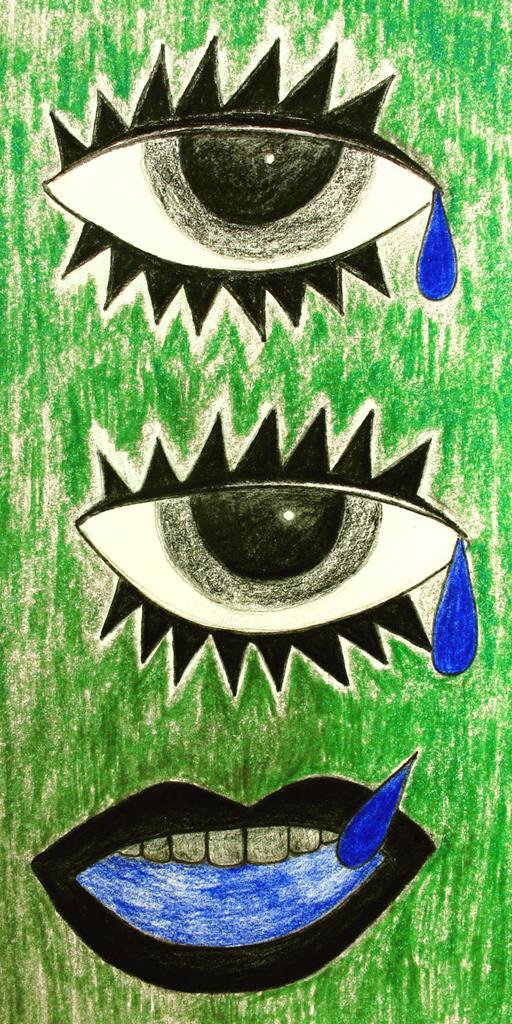Untimely Stories
dal 20/9/2012 al 1/12/2012
Segnalato da
Akademia Ruchu
Mohamed Bourouissa
Gast Bouschet & Nadine Hilbert
Jeremie Boyard
Peter Friedl
Jens Haaning
Agnieszka Kalinowska
Aleksander Komarov
KwieKulik
Aniko' Lorant
Kaszas Tamas (ex-artists collective)
Nastio Mosquito
Ahmet Ogut
Wendelien van Oldenborgh
Janek Simon
Slavs and Tatars
Mona Vatamanu
Florin Tudor
Jaroslaw Lubiak
Joanna Sokolowska
20/9/2012
Untimely Stories
Muzeum Sztuki 2, Lodz
As a civilisational model, a political project carried out in the form of the European Union, a source of aspiration and an inspiring myth, Europe becomes in the exhibition a spectre. The featured artists' works suggest that rather than continuing to influence its peripheries or former colonies, Europe will become dependent on them. Works by Mohamed Bourouissa, Peter Friedl, Wendelien van Oldenborgh, Slavs and Tatars and more.

Curated by : Jarosław Lubiak and Joanna Sokołowska
Untimely Stories are an attempt to recognise Europe’s present and upcoming situation with the use of art. When the ideas and solutions on which the European model was based are losing their validity and requiring new ideas, art can propose its own recognitions of the contemporary conditions as well as suppositions about the future.
According to Nietzsche, untimeliness means acting against our time and thus ‘for the benefit of a time to come’. Expanding upon the concept, Giorgio Agamben identifies the untimely with the contemporary: those who are contemporary go beyond their time, beyond the present moment and the pragmatic logic of punctuality. Those who inscribe themselves perfectly in the present are unable to see it. The contemporary dispute their time, thanks to which they are able to properly recognise it and act accordingly. Accordingly, that is, in keeping with a subjectively noticed truth about it. In this sense, the works presented in the show are untimely. They become contemporary because they go beyond the present moment. They offer narratives that signal the consequences of our past and that which are to come. They do not aspire to be suggesting solutions for current issues. Unlike conventional politics, the politics of art utilises fiction, in which it notices a potential of indicating the truth about its own time and translates social recognitions into artistic forms. It does so in the conviction that thinking and acting currently, pragmatically, is not enough.
As a civilisational model, a political project carried out in the form ofthe European Union, a source of aspiration and an inspiring myth, Europe becomes in the exhibition a spectre. The featured artists’ works suggest that rather than continuing to influence its peripheries or former colonies, Europe will become dependent on them. They assume, therefore, a transformation of the current geopolitical relations between the centres and the peripheries. The artists’ recognitions reverse also from the EU’s currently dominant, pragmatic mode of managing the financial crisis and the domination of an economy that reduces all social relations to market ones. Instead, they suggest we should be learning non-systemic forms of survival, the economy of friendship or gift. They also signal a move away from the current models of liberal democracy and towards other, perhaps emancipatory, modes of community or, perhaps, towards new forms of violence and power. In the face of the unpredictability of the upcoming changes, aware of the irreconcilable conflicts tearing Europe apart, the artists’ works are an attempt to go beyond particularisms, to create an artificial language in which these dissimilarities can both resound and join.
Featured artists and collectives:
Akademia Ruchu, Mohamed Bourouissa, Gast Bouschet & Nadine Hilbert, Jérémie Boyard, Peter Friedl, Jens Haaning, Agnieszka Kalinowska, Aleksander Komarov, KwieKulik, Anikó Loránt – Kaszás Tamás (ex-artists collective), Nástio Mosquito, Ahmet Öğüt, Wendelien van Oldenborgh, Janek Simon, Slavs and Tatars, Mona Vătămanu & Florin Tudor
Exhibition design: Krzysztof Skoczylas
Exhibition catalogue
This exhibition is part of the Europe (to the power of) n.
Europe (to the power of) n is a transnational project of the Excellence Initiative of the Goethe-Institut. It is a collaboration of the Goethe-Institut in Munich and the Regional Goethe-Institutes in Central and East Europe, South-East Europe, North-West and South-West Europe and East Europe/Central Asia, in Belgrade, Istanbul, Beijing and Warsaw, Brussels, London, Minsk, Vilnius, Oslo, Madrid with ten institutions in and outside the European Union. Europe (to the power of) n is coordinated by Sabine Hentzsch, Goethe-Institut in London. Artistic Director is Barbara Steiner.
The external partners are: Co-Organisers: Curating Contemporary Art Programme / Royal College of Art, London; Muzeum Sztuki, Łódź; Henie Onstad Kunstsenter, Høvikodden / Oslo; Associated Partners: Contemporary Art Study Centre / European Humanities University, Vilnius; Novaja Europa Magazine, Minsk; Galerie Y, Minsk; SALT, Istanbul; Muzej savremene umetnosti Vojvodine, Novi Sad; Sint-Lukasgalerie, Brussels; Taipei Contemporary Art Centre, Taipei; Vitamin Creative Space, Beijing / Guangzhou; San Telmo Museoa, Donostia-San Sebastián, Office for European Capital of Culture 2016, Donostia-San Sebastián.
Image: Tamás Kaszás and Anikó Lóránt (ex-artists collective), part of Famine Food project , since 2011, courtesy of the artists.
Opening: 21st September 2012, 6.00 p.m.
ms²
Ogrodowa 19 St. - 91-065 Łódź
tuesday: 10.00 a.m. - 6.00 p.m.
wednesday - sunday: 11.00 p.m. - 7.00 p.m.
Admission is free every Thursday
individual tickets (normal / reduced)
• permanent exhibition - 8 / 5 PLN
• temporary exhibition - 6 / 3 PLN
• promotional coupon for permanent or temporary exhibition (while purchasing tickets for permanent and temporary exhibition) Permanent exhibition - 6 / 3 PLN Temporary exhibition - 4 / 2 PLN
• special reduced ticket price for permanent and temporary exhibitions for ISIC, ITIC, Go'25, Zielona Karta, Tourinc Club Italiano, EURO'26 card holders - 3 PLN



